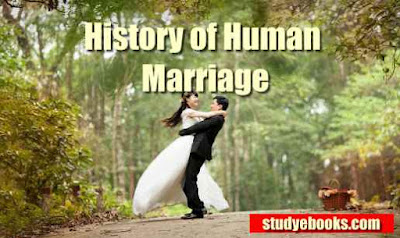Download The history of human marriage - PDF (1922) by Edward Westermarck
The history of human marriage
 |
| The History of human marriage |
From introduction:
I do not propose to discuss marriage in all its aspects, but shall, in the main, restrict myself to the following subjects: the origin of marriage and questions connected with it, such as sexual periodicity, the various groups of facts which have been regarded as evidence of primitive promiscuity (alleged instances of peoples living in promiscuity, pre-nuptial unchastity, the jus primae noctis, religious prostitution, the lending and exchange of wives, feasts at which promiscuous intercourse is indulged in, the classificatory system of relationship, mother-right), and masculine jealousy ; the frequency of marriage and the marriage age ;
During the thirty years which have passed since the publication of the first edition of the present work the study of marriage and matters connected with it, especially among the lower races, has made such progress that I have found it necessary to reconsider the whole subject. Many new facts have been incorporated, and some old ones have been omitted.
Various aspects of marriage, which were previously dealt with very inadequately or hardly touched upon, have been discussed at length. Objections raised by critics have been carefully considered. The old theories have been in some cases strengthened but in other cases modified. New theories set forth by other writers have been scrutinized.
The matter has in many points been rearranged, and the book has been rewritten throughout to such an extent that very few sentences of the earlier editions have remained unchanged. Only some of the changes can be briefly indicated.
A new introductory chapter on method, largely dealing with problems of recent growth, has taken the place of the old one. The statements quoted by certain writers as evidence of people living in a state of promiscuity have been more carefully examined, and the customs which have been represented as survivals of such a state in the past have been more fully discussed.
Thus the subjects of the jus primae Noctis, religious prostitution, and the lending or exchange of wives now occupy sixty-nine, pages instead of nine. In the treatment of the classificatory system of relationship the recent contributions to the subject, which largely confirm my old views, have been taken notice of. In discussing the marriage age and certain other matters, more attention has been paid to the laws of civilized countries. Religious celibacy and sexual modesty have each got a special chapter. The origin of female coyness has been discussed.
Concerning the secondary sexual characters, a suggestion has been made which, if correct, brings the sexual colours, odours, and sounds of animals into the closest possible analogy with the colours and odours of the flowers of plants. In the chapters on primitive means of attraction the older theories, though in some measure supported by new evidence, have in certain points been modified by the results of later research.
A more thorough investigation of exogamy. ous rules have confirmed my belief in the substantial accuracy of my earlier theory as to their origin; and I hope that the restatement of it, in which the objections of critics have been taken into consideration, has made it more acceptable. The chapters on marriage by capture and marriage by consideration, together with kindred subjects, contain copious additions and changes.
The extremely defective treatment of marriage rites, which covered thirteen pages only, has been replaced by three chapters of more than twelve times that length; but for a study of the marriage ritual as a sequence,
I must refer the reader to my book Marriage Ceremonies in Morocco. In the course of my six years' research in Morocco, and through books like The Mystic Rose and The Golden Bough, I have become aware of the enormous influence of magical beliefs on marriage rites; whereas the value of these rites for the study of earlier forms of marriage now seems to me to be even less than I thought before. I am grateful to the distinguished reviewer of the first edition of this work who expressed the belief that if its author had been a student of folklore he would in various cases have arrived at different conclusions. It drew my attention to a defect which I have since then endeavoured to remedy, but my conceptions of the earlier history of marriage have not been essentially changed thereby.
Publication date 1822
author: Edvard Alexander Westermarck was a Finnish philosopher and sociologist. Among other subjects, he studied exogamy and the incest taboo
Download 3 PDF books -3 Volumes of Human Marriage









